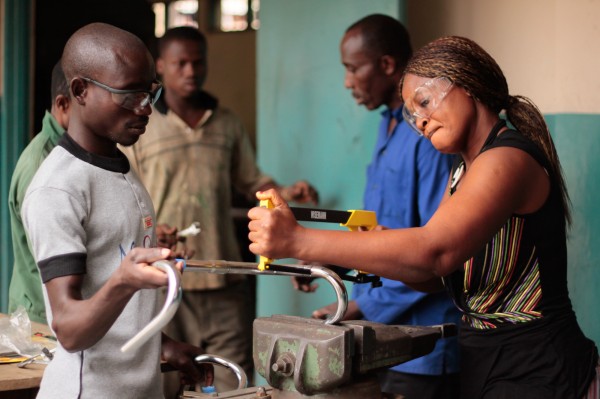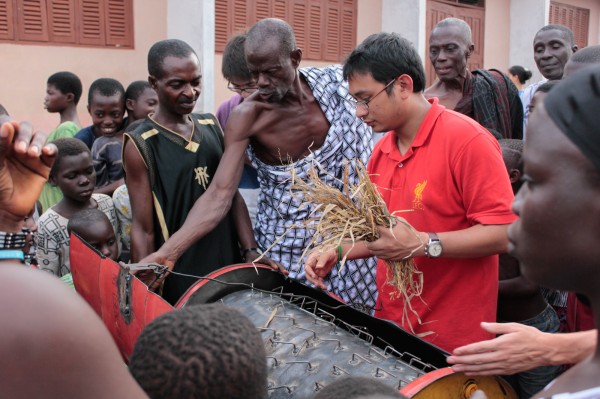
The International Development Design Summit is put on by Amy Smith and her students at MIT. This year it took place in Kumasi, Ghana – which will be followed by Maker Faire Africa this weekend in Accra, where some of their work will be shown.
Here’s a quick list of the projects they have been working on over the last five weeks:
– A press that speeds up the process of extracting oil from shea nuts
– A device for generating electricity from a playground carousel
– A machine for making recycled plastic products from used water sachets
– A set of tools for threshing groundnuts
– A mechanism for producing chlorine from salt water using readily available materials
– A simple, low cost battery made from local materials, for household lighting and other uses
– A human powered grating machine for speeding up cassava processing
– A thresher to improve the quality of rice by preventing stones from mixing with the grains
– A chlorine dispenser for disinfecting drinking water
– A family friendly latrine designed to promote use and hygiene among young children
– A device for monitoring the growth of children under five through cell phone technology
– A container that extends the shelf life of tomatoes during transport and storage

The importance of being in Ghana
Niall Walsh has written this information about how the importance of the move to Ghana for this year’s IDDS was to both MIT and the participants:
The main difference between IDDS Ghana and IDDS in MIT is the proximity to community partners and potential end users of the projects. IDDS prides itself on the spirit of co-creation and this movement from the States to Africa is a crucial one in line with this vision. The difference between participants sitting in lecture halls in MIT, learning about international development and the importance of speaking to at least fifty villagers before designing a technology, and actually living with and talking to hundreds of villagers all over the country, is immeasurable. In total IDDS this year worked with ten villages throughout the Bromg – Ahafo and Ashanti regions and teams had the chance to make three separate two night visits (spread throughout the design process to make sure they had input into every stage) to these villages. Among a huge number of other factors, the simple experience of having end users actually become extremely excited about your prototype, and seeing them test it out, is an incentive for teams to continue their project after IDDS.
Another way in which IDDS interacted with the local community, rather than simply for it, was through it’s interactions with Suame Magazine. This is an engineering cluster located in the centre of Kumasi, spanning twenty miles and with a working population of over 200,000 people. There are approximately 12,000 independent micro, small and medium enterprises located in the area and their main activities of vehicle repair and metal fabrication (welding and casting) are renowned for their ingenuity all across West Africa. During the summit, participants worked extensively with these engineers and mechanics in the ‘Magazine’ and had the chance to share ideas, techniques, and technologies with each other
The point has been stressed home at this year’s IDDS that these villagers involved in the process, as well as the workshop guys in Suame, are partners in the design process, rather than simply people we should talk to along the way. Without these partners, the technologies presented tomorrow at the Great Hall would quite simply not be possible, and I think that knowledge, in and of itself, will prove invaluable to our participants as they continue to work in international development after the conference. In light of this, five villagers from each village, as well as workshop managers from Suame, will be provided transport, accommodation and food to come to the final presentations to see all the different prototypes.
Systems have also been put in place to ensure that the projects worked on at this year’s IDDS will continue to be worked on after IDDS. There are project grants and partnership grants available for the teams and there will also be a full time country liaison for Ghana, responsible for integrating the technologies into all of our partner villages, as well as sourcing new villagers and markets to help disseminate and create business models for the technologies. On a far more practical level, villagers will also have the opportunity to decide which of the prototypes they are most interested in, and then work with our partners in Suame Magazine to have these manufactured.


Can you send details of the chlorine dispenser please, Eric?
I was glad to read such informationI am right there with you.